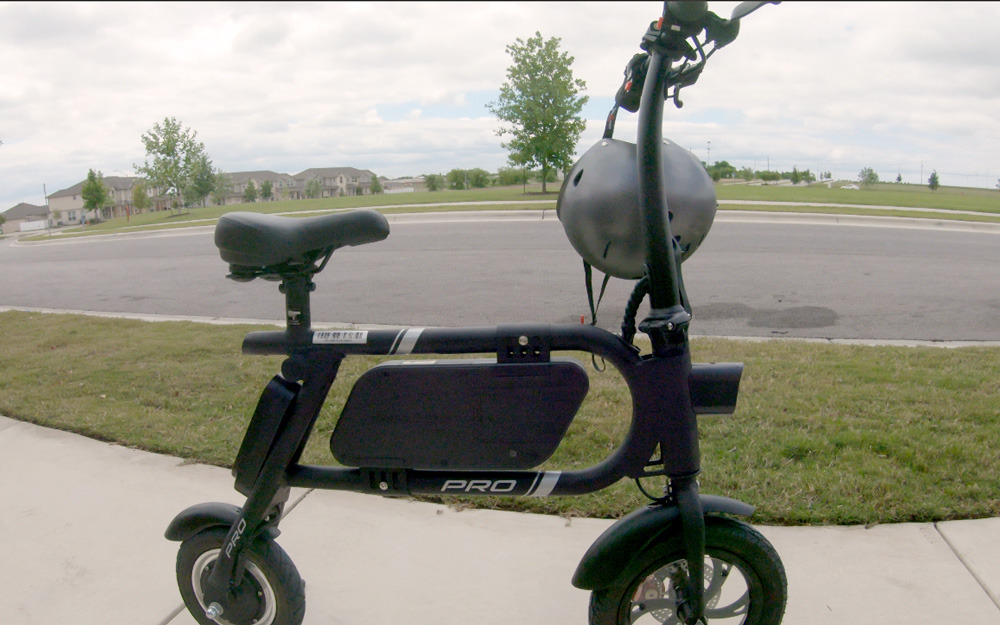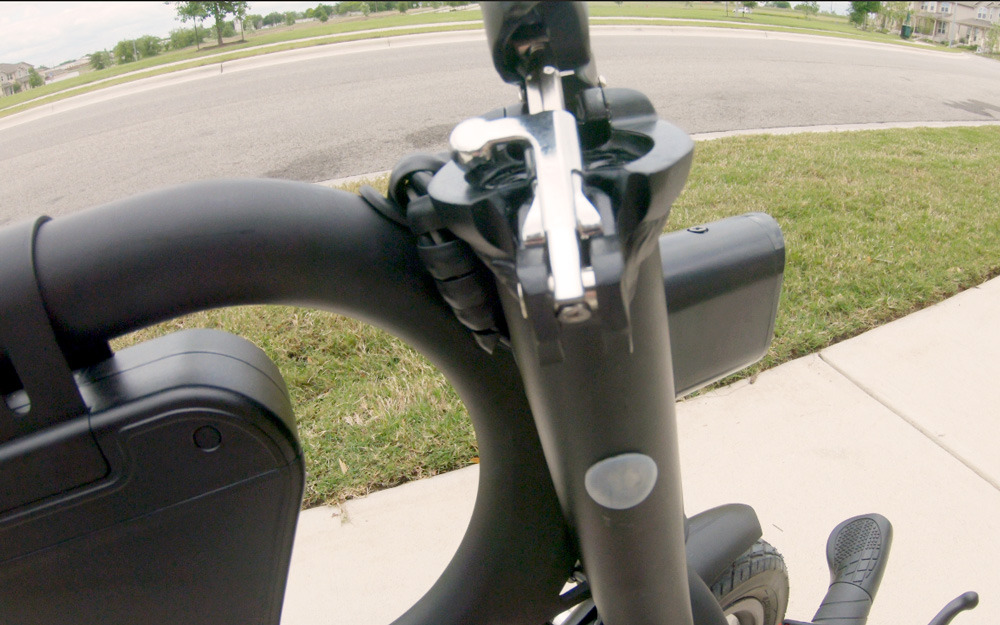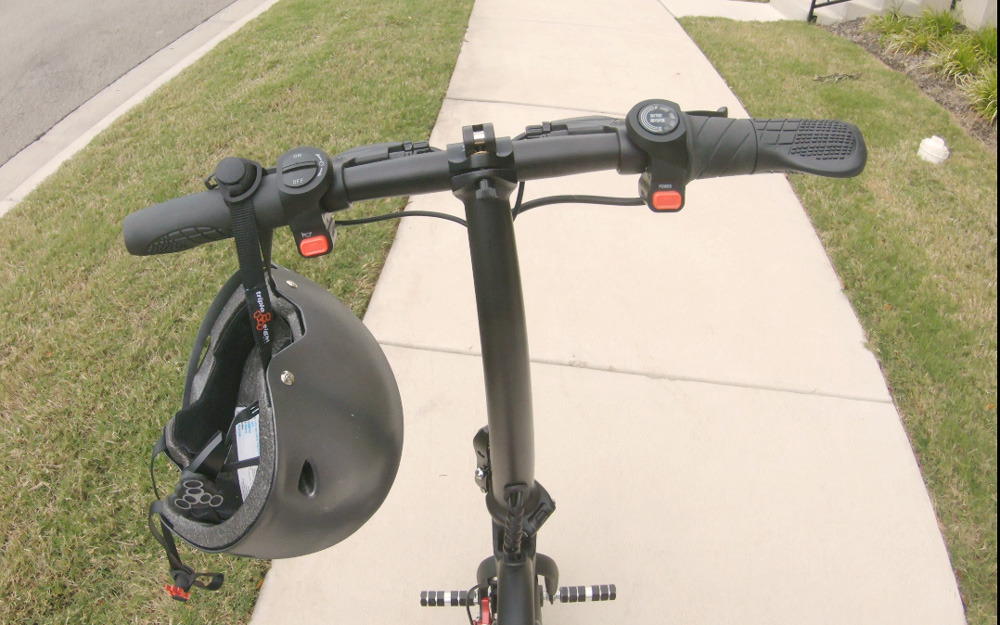Swagtron's SwagCycle Pro is a fun, iPhone-enhanced "last mile" transportation option, if catering to a narrow niche.
It's increasingly looking to me like one-person electric vehicles — PEVs for short — are the future. There's always going to be a call for bigger vehicles of course, even once autonomous tech reigns. But a glimpse at services like Bird and Lime shows there's high demand for "last mile" EVs, whether it's getting from the office to a coffee shop or from the subway to a concert. Segway was right after all.
We've already reviewed one iPhone-connected option, the Boosted Stealth. Electric skateboards and bikes are taking off, and if you're really committed, you can even get self-balancing electric unicycles (EUCs) from companies like Inmotion and Kingsong. Still other people swear by a hybrid, the Onewheel.
I'm convinced scooters will triumph in the near term. Whereas it can take a few days to get comfortable with a board or EUC, it often takes just a few minutes — if that long — to get used to a scooter. Many electric bikes are also fantastically expensive, costing over $2,000.
The SwagCycle Pro is an odd beast in that it's designed like a foldable electric bike, but is otherwise a pure scooter. When its battery runs dry, that's it — there aren't any pedals to fall back on or generate more power.
Mercifully the Pro comes mostly pre-assembled, the only exceptions being the footpegs and seat. It took a while to put the seat together securely, as it uses an unorthodox method and Swagtron's manual needs clarification.
Once everything was together though I was pleasantly surprised by the Pro's construction. It uses a tough aluminum frame, and Swagtron doesn't seem to have skimped on most other key materials either, at least externally. The handlebar stem for example is locked and unlocked using a lever mechanism that's easy to operate, but as sturdy as you could ever want.
Other kudos are deserved for ergonomics. Though the Pro is small, its footpegs are positioned in a way that most people should find comfortable, even those of us over 6 feet tall. Critically the seat is plush and suited to long rides — it feels like it belongs on a far more expensive product.
Controls meanwhile are dead simple. There's a throttle wheel on the right handlebar, and the front and rear brakes are triggered with bike-style grips. There are dedicated power and horn buttons, and a toggle switch adjusts lighting.
I wouldn't trust the horn or lighting if you're truly worried about safety, though. The horn is too quiet to be heard in serious traffic, and though the LEDs illuminate where you're going, they may not be enough for long-distance visibility by cars.
The Pro isn't waterproof either, which means you should avoid riding it in the rain. Even the plastic lid guarding the charging point isn't sealed, so a downpour risks making the vehicle unrideable.
Riding & Portability
Getting going should be easy for anyone who's been on a bike: just put one foot on a peg, twist the throttle, then bring the other foot up as you get moving. Don't worry, it won't accelerate too fast. The one tricky thing is that it blends an electric motor with sharp bike-style steering, so be sure to ease off the throttle on hard turns.
There's no suspension to speak of, but the Pro does offer a reasonably smooth ride thanks to air-filled tires measuring 12 inches on the front and 10 inches on the back. In my testing I never encountered anything particularly jarring, even on rough sidewalks.
The scooter's greatest problem, I think, is that it's underpowered. While it can theoretically get up to 18 miles per hour, that depends heavily on your weight, tire pressure, and road conditions. I weighed about 200 pounds during my review, and I never approached 18mph except perhaps on downward slopes. Much of the time I was going under 10mph.
Indeed the Pro is capped at 12mph by default. If you want to go faster, you'll have to fire up the Bluetooth-connected SwagCycle II iPhone app. You can set the limit to 12, 15, or 18mph.
I'd recommend against going higher than 12. The Pro's range is nominally between 12.4 and 15.5 miles, but realistically that assumes you stick to 12mph, you're not terribly heavy, and you're on mostly flat terrain. When I cranked the scooter to 18, it ran out of power in just a few miles, forcing me to walk the scooter home.
Before juice runs dry you run into sag — that is, the Pro's performance becomes increasingly weak. It's inevitable for any PEV but especially prominent here. Higher-quality batteries would make a world of difference.
Either way, the Pro's 350-watt motor struggles up hills. San Francisco residents need not apply.
When you absolutely must get somewhere, the bike layout offers a disadvantage versus conventional scooters. With a stand-up scooter such as a Segway ES2, you can always kick your way home — that doesn't work with a SwagCycle.
The Pro is reasonably portable otherwise, yet it might not be a good commuting choice if you take crowded trains and buses. Even with the stem folded it occupies a decent footprint, and it weighs 30.4 pounds, so it's not a light carry unless you're strong.
The iPhone app
Visually the iPhone app is rather outdated — it doesn't follow Apple's recent design principles. Functionally, it's surprisingly decent.
Its dashboard view includes speedometers and odometers, average trip speed, and estimated battery percentage remaining. It's generally better to check the app for battery life when you can, since the LEDs on the scooter itself tend to fluctuate wildly.
I didn't find the trip-logging feature terribly useful, but there are some other thoughtful features. Aside from speed limit controls, you can choose to lock the rear wheel as a security measure, and password-protect the app in case you're worried about your iPhone being stolen too.
There's even a settings option for diagnosing potential hardware issues, which is something every iPhone-connected PEV should have. I couldn't test how well this works — what with needing a rideable scooter to review — but I was glad to know it was there.
Conclusions
It seems like there are two use cases for the Pro. The first is for people with short commutes, and/or those who ride public transit and aren't worried about the space it'll take up. Commuters will have to be kosher with a sit-down ride, a slow pace, and carrying anything massive in a backpack.
The second case is purely for fun, though honestly, I think kids and teenagers will get more out of it than adults. Light weight means better range and speed, with the familiarity of a bike to minimize the learning curve.
I wouldn't spend my own money on a Pro simply because I think there are other options with greater flexibility. A Segway ES2/ES4 or Xiaomi M365 may cost extra, but that'll get you more consistent speed, range, and portability. None too coincidentally, those are also the scooters most rental services use — so if you happen to live in a city those services cover, you may already be golden.
I'm honestly hoping Swagtron makes a successor to the Pro that fixes its shortcomings — there's a kernel of greatness here.
Score: 3 out of 5
Where to buy
The SwagCycle Pro retails for $399 and is available in your choice of two colors at Amazon.
 Roger Fingas
Roger Fingas










 Wesley Hilliard
Wesley Hilliard
 Marko Zivkovic
Marko Zivkovic

 Malcolm Owen
Malcolm Owen

 Amber Neely
Amber Neely

-xl-m.jpg)









There are no Comments Here, Yet
Be "First!" to Reply on Our Forums ->